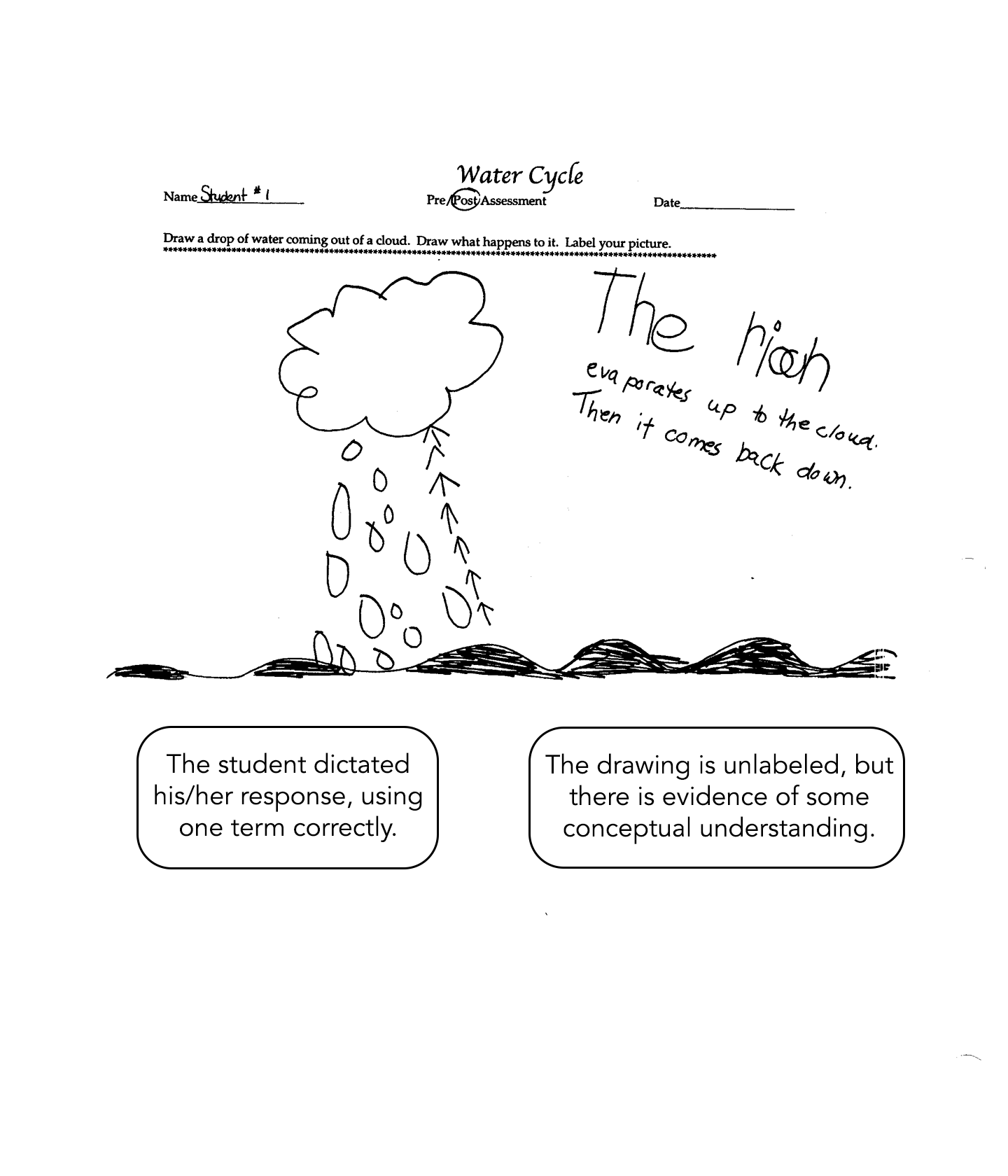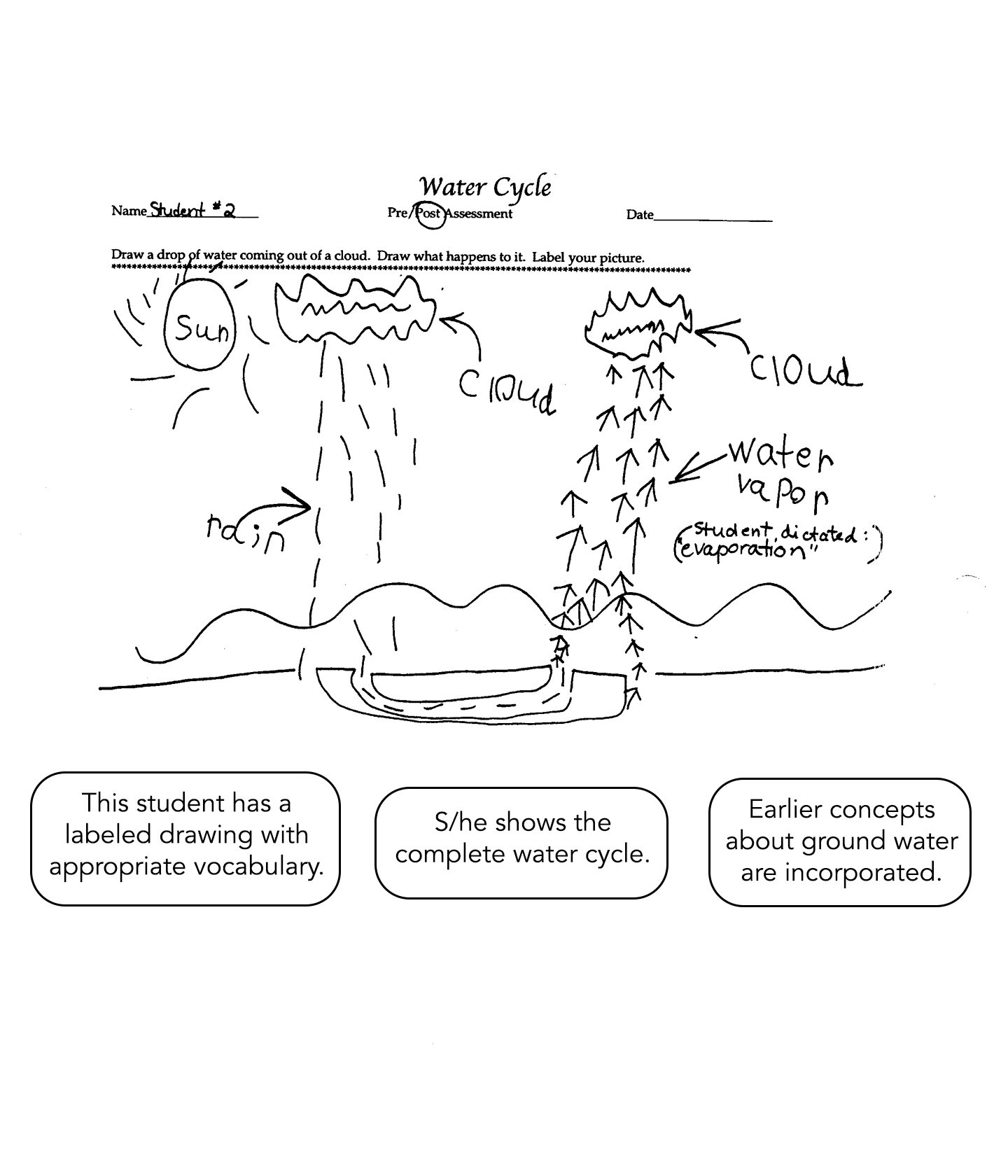Where Does a Drop of Rain Go?
We will be learning how rain is made in nature and where the raindrops go after they fall out of the sky. First, you will draw and write what you know and think about these things. At the end of our unit, I will ask you to do this again to see how much more you have learned about what makes rain and where it goes.
Two 20-minute class sessions, about two weeks apart, for pre- and postassessments.
Instructional Support Downloads
Students should explain, label and/or draw all of the key aspects of the water cycle:
- Raindrops falling from a cloud
- Water flowing to rivers and streams
- Heat causing water on the earth to evaporate and rise
- Clouds formed by cooling air
- Condensation
Key words that students should use are: evaporation, precipitation and condensation (written on the board to assist spelling).
This student’s solution is incomplete and lacking in detail. The drawing is not labeled and is unclear. There is little evidence of conceptual understanding.
This student dictates his/her solution, using one of the vocabulary words appropriately. The drawing is not labeled, but there is some evidence of conceptual understanding of the water cycle. Further questioning would reveal the degree of understanding of the science vocabulary and concepts.
This student’s solution shows a complete cycle and uses terms accurately. The drawing is clearly labeled and the student incorporates his/her earlier understanding of groundwater appropriately – evidence of conceptual understanding.
This student’s solution is complete and accurate. The explanation outlines in detail the three key vocabulary words (precipitation, evaporation, condensation) – evidence of conceptual understanding. The student extends thinking by using other appropriate science vocabulary and includes a diagram showing other aspects of the water cycle (groundwater and how plants use that water).







